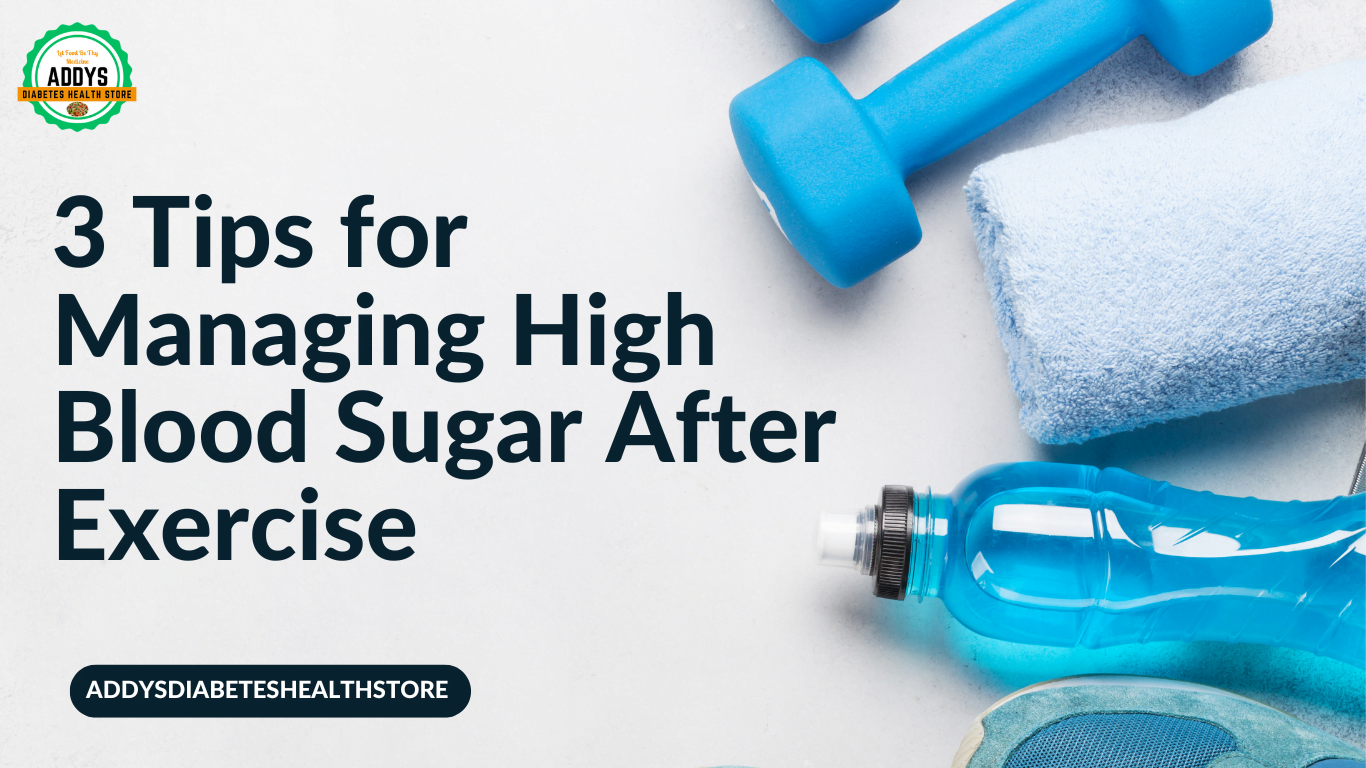Introduction
Are you managing diabetes and incorporating exercise into your routine? It’s essential to understand how to handle high blood sugar after physical activity to ensure your well-being. In this blog post, we’ll explore three valuable tips on dealing with high blood sugar after exercise. By following these recommendations, you can effectively manage your blood sugar levels and promote optimal health. Let’s delve into these practical strategies to navigate the post-workout challenges associated with diabetes.
Tip 1: Test your blood sugar levels
Why Testing is Essential
Before embarking on any physical activity, individuals with diabetes must prioritize testing their blood sugar levels. This step is crucial in understanding the body’s current state and determining the appropriate actions to take. By checking blood sugar levels before exercise, one can proactively address any imbalances and ensure a safe workout session. Monitoring allows for quick adjustments, whether it involves consuming glucose for low levels or assessing ketones for high levels.
Importance of Regular Monitoring
Throughout the exercise routine, it is vital to maintain a continuous check on blood sugar levels. Regular monitoring enables individuals to make immediate modifications to their activities based on real-time data. This practice empowers individuals to stay in control of their blood sugar levels and prevent any drastic fluctuations. Post-exercise, rechecking blood sugar levels is equally crucial to confirm stability and avoid any potential health risks.
Balancing Act with Testing
Finding the right balance between testing and exercising is key to effectively managing blood sugar levels. Testing before, during, and after physical activity provides a comprehensive picture of how the body responds to exercise. By incorporating testing into the routine, individuals can make informed decisions to safeguard their health. Understanding the significance of testing empowers individuals with diabetes to take charge of their well-being and optimize their exercise regimen.
Tip 2: Rest until sugar levels stabilize
When blood sugar levels are not well-balanced, taking a break from exercise is advisable. It’s important to listen to your body and prioritize stability and balance. Here are some key points to consider:
-
Start slowly and gradually increase the intensity of your workout to manage blood sugar levels effectively.
-
Engaging in a steady rate of cardio is more beneficial than intense bursts of activity that can cause sugar spikes.
-
Resting until sugar levels stabilize allows your body to recover and regulate blood sugar effectively.
By giving your body the time it needs to stabilize, you can prevent sudden spikes or drops in blood sugar. Remember to pay attention to your body’s signals and avoid pushing yourself too hard, especially if your blood sugar levels are not under control. Prioritizing rest and stability is essential for overall well-being and blood sugar management.
Tip 3: Stay hydrated
Ensuring proper hydration is a key component in managing high blood sugar levels after exercise. Hydration aids in flushing out excess sugar from the body and maintaining overall well-being. It’s essential to prioritize drinking an adequate amount of water throughout the day, especially during physical activity or in hot weather conditions.
-
Hydrating with at least 8 glasses or more of water daily is recommended for individuals with diabetes. Water plays a crucial role in regulating blood sugar levels and preventing dehydration, which can adversely impact glucose levels. Opting for pure water over sugary drinks or sports beverages is crucial to avoid further spikes in blood sugar.
Staying hydrated not only supports blood sugar management but also contributes to overall health and vitality. Proper hydration can help prevent dips or spikes in blood sugar levels post-exercise, promoting stability and balance. Making a conscious effort to drink water regularly is a simple yet effective way to support your diabetes management and well-being.
In conclusion, staying hydrated is a fundamental practice in dealing with high blood sugar after exercise. By incorporating adequate water intake into your daily routine and during physical activity, you can support your body in maintaining optimal blood sugar levels and overall health. Remember, hydration is key to managing diabetes effectively and promoting a balanced lifestyle.
Conclusion
In conclusion, managing high blood sugar levels after exercise is crucial for individuals with diabetes. By following the three tips outlined in this blog post, you can effectively navigate the post-workout challenges and promote optimal health. Testing your blood sugar levels, resting until they stabilize, and staying hydrated are simple yet powerful strategies to help you manage your condition. Remember, consistency is key in maintaining control over your blood sugar levels. Incorporating these tips into your routine can make a significant difference in your overall well-being. Stay proactive, stay informed, and prioritize your health above all else.
FAQ
What are some tips for dealing with high blood sugar after exercise?
-
Tip 1: Test your blood sugar levels to monitor any fluctuations.
-
Tip 2: Rest until your sugar levels stabilize to avoid any potential complications.
-
Tip 3: Stay hydrated to help regulate your blood sugar levels post-exercise.
Why is it important to manage high blood sugar after exercise, especially for individuals with diabetes?
Managing high blood sugar levels after exercise is crucial for individuals with diabetes as it helps prevent potential health risks and complications. By following these tips, you can effectively manage your blood sugar levels and promote overall well-being.

